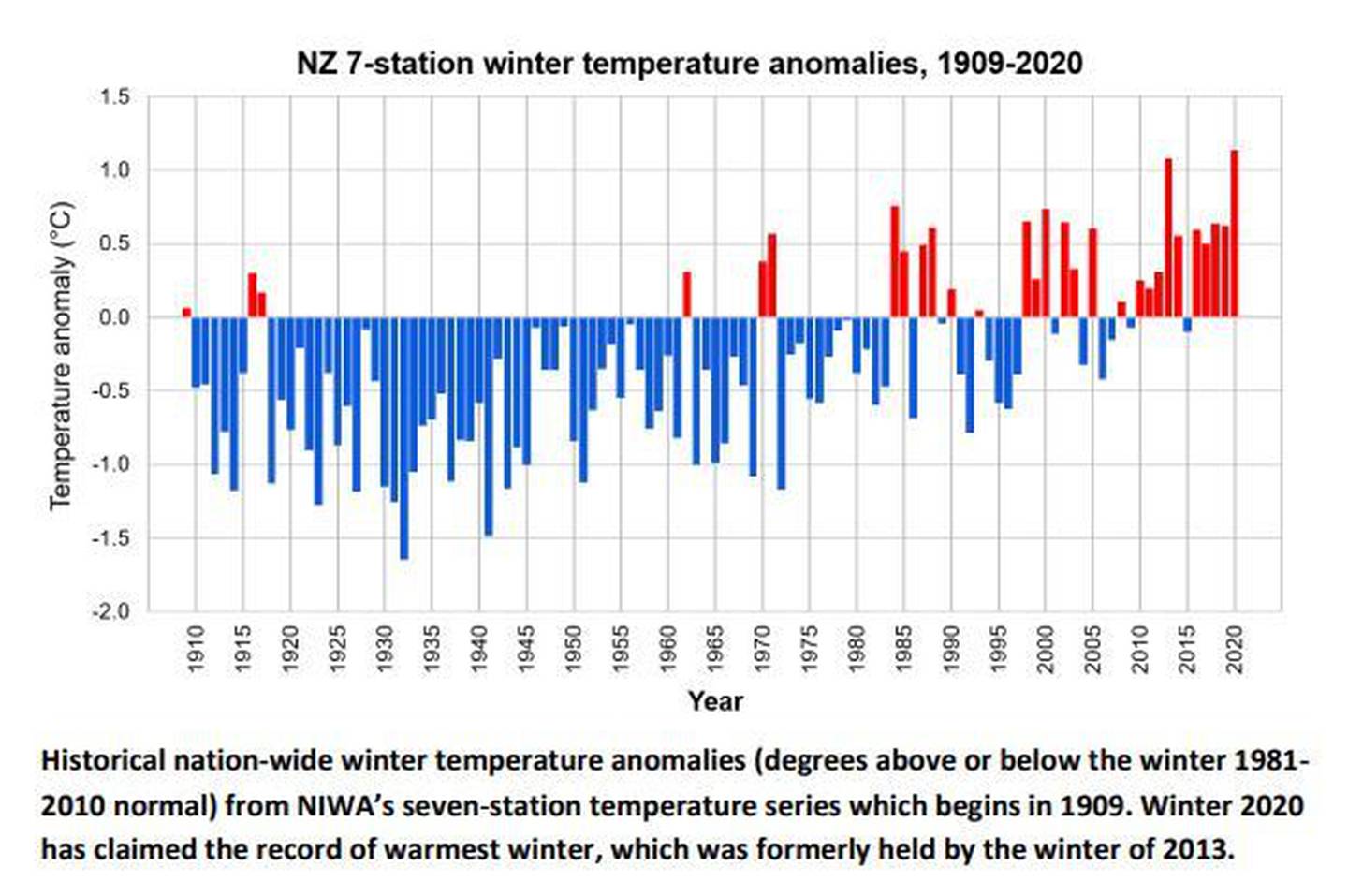
Seven of the 10 warmest winters have occurred since 2000, increasingly fuelled by climate change - the "long-term tailwind".
The countrywide average for 2020 was 9.6C - 1.14C above the 1981-2010 average, taken from Niwa's seven station temperature series which begins in 1909, and pipping the previous record of 2013 by just 0.06 deg C.
Temperatures across the country were generally above or well above average. Only a few spots were near average, including Tararua, Kaikoura, and parts of Southland and Otago.
The top spot was Timaru, with a completely out-of-season 25.1 deg C on August 30.
The lowest temperature was -12.3 deg C, at Middlemarch on June 14.
Of the six main centres in winter 2020, Auckland was the warmest, Christchurch was the coolest, Tauranga was the wettest and sunniest, Dunedin was the driest, and Hamilton was the least sunny.

According to Niwa's Winter 2020 Climate Summary, driving these high temperatures were four main factors: sub-tropical winds, warmer-than-average seas, more sunshine, and climate change.
The season was characterised by more frequent warm northeasterly winds than normal, particularly to the North Island, which was associated with a developing La Niña event in the equatorial Pacific.
Sea surface temperatures (SSTs) surrounding New Zealand were also warmer than average - 0.5 deg C to 1 deg C - and most notably during August, which exerted a further warming influence on the country's air temperatures.
A prevalent high-pressure system over the country contributed to a sunnier-than-normal winter for much of the South Island and lower North Island.
This all combined with the background influence of climate change, the "long-term tailwind to our temperatures", which resulted in widespread warm conditions during winter.













